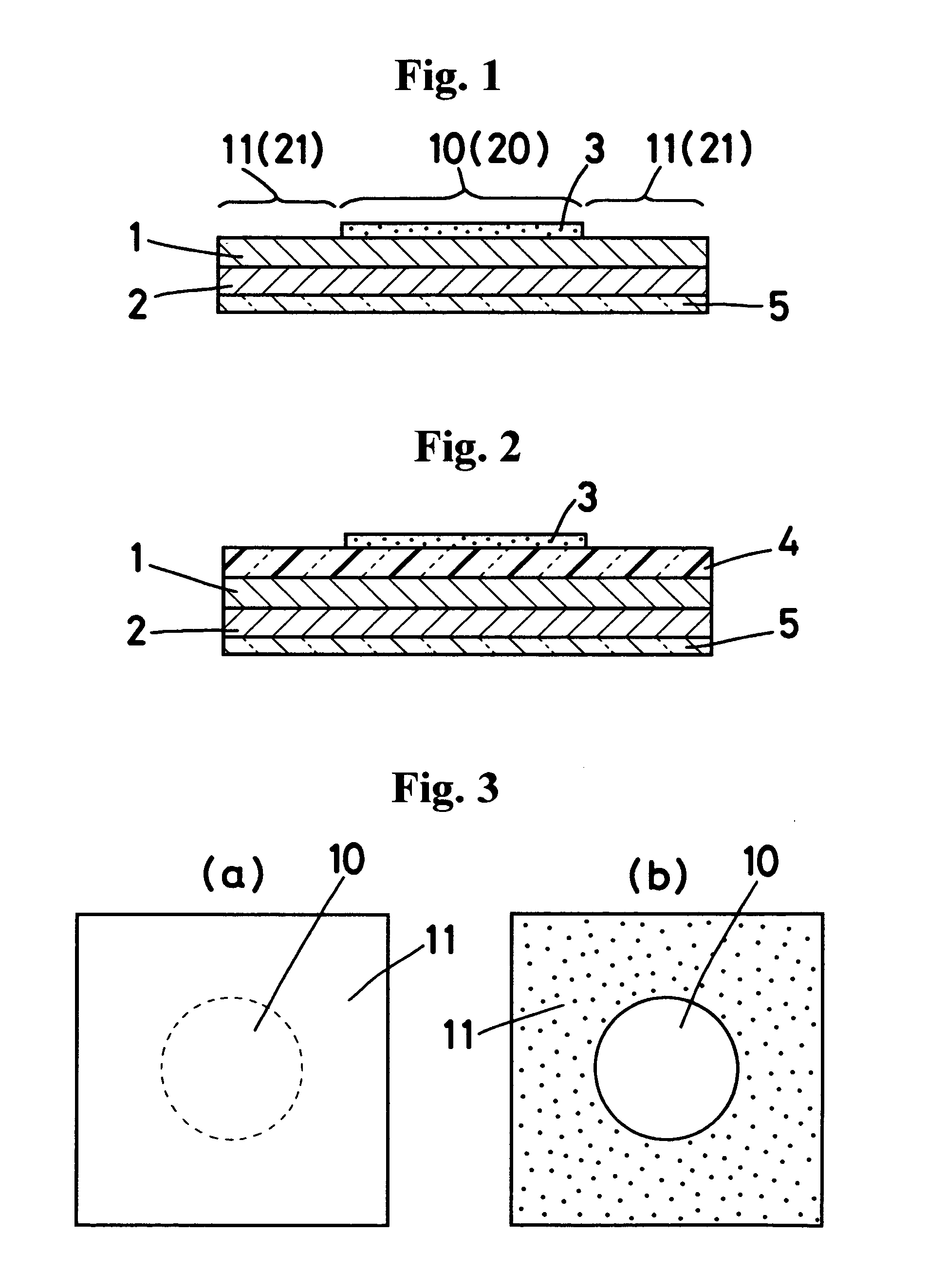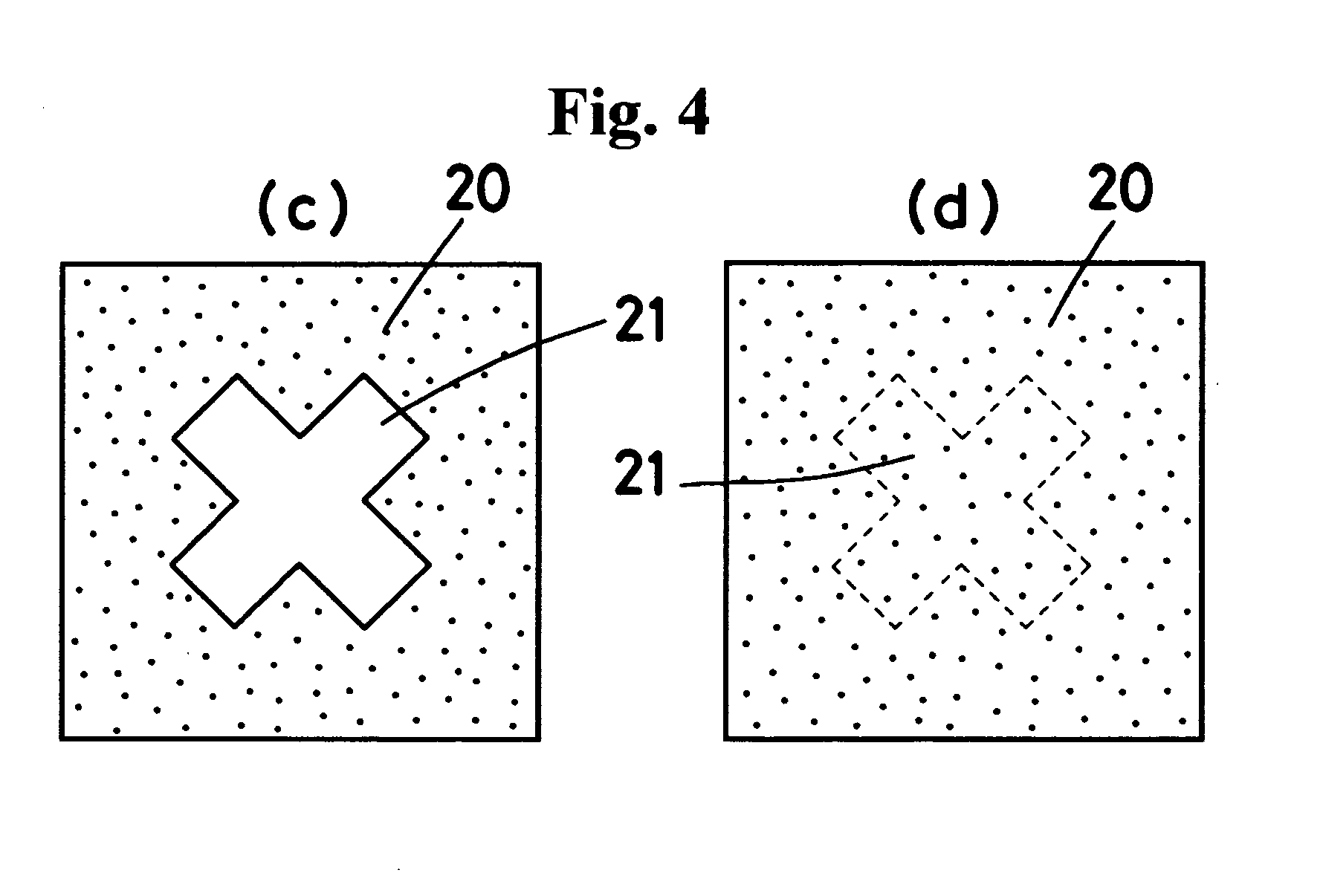Radiation exposure history indicator
a technology of exposure history and indicator sheet, which is applied in the direction of material analysis using wave/particle radiation, instruments, conversion screens, etc., can solve the problems of difficult to confirm 5 gy or less of the radiation dose for medical treatment using radiation, difficult to deal, and large-scale exposure dose measurement equipment. , to achieve the effect of easy attachment to the patient, improved accuracy, and improved accuracy
- Summary
- Abstract
- Description
- Claims
- Application Information
AI Technical Summary
Benefits of technology
Problems solved by technology
Method used
Image
Examples
example 6
[0109] An indicator sheet was prepared by the same procedure used in Example 2 except that barium sulfate was used as the radiation absorbent.
example 7
[0110] An indicator sheet was prepared by the same procedure used in Example 1 except that a mixture specified in Table 1 was used as the polymer compound.
example 1
DOSIMETRY EXAMPLE 1
[0116] The composition obtained in Example 1 was applied to a base material made of polyethylene, which had the adhesives in overleaf plane thereof, like layers, and was dried. The layer of the composition was covered with a transparent plastic film for avoiding the influence of moisture etc. It was cut into 1.5 cm square, to obtain a label of an exposed dose indicator whose color hue of the layer was white.
[0117] Prior to dosimetry of exposed dose, the standard color of the indicator was adjusted as follows. Some labels of the same kind of the exposed dose indicators prepared with the same procedure as mentioned above were respectively exposed beforehand to X-rays of different radiation dose, which was increased in every about 1 Gy in 0.5 to 5 Gy of radiation dose equivalent to the exposed dose used for an actual medical examination or treatment. The color hues of the layers of the indicators were changed from white to gray or black, corresponding to the radiati...
PUM
| Property | Measurement | Unit |
|---|---|---|
| composition | aaaaa | aaaaa |
| weight | aaaaa | aaaaa |
| color | aaaaa | aaaaa |
Abstract
Description
Claims
Application Information
 Login to View More
Login to View More - R&D
- Intellectual Property
- Life Sciences
- Materials
- Tech Scout
- Unparalleled Data Quality
- Higher Quality Content
- 60% Fewer Hallucinations
Browse by: Latest US Patents, China's latest patents, Technical Efficacy Thesaurus, Application Domain, Technology Topic, Popular Technical Reports.
© 2025 PatSnap. All rights reserved.Legal|Privacy policy|Modern Slavery Act Transparency Statement|Sitemap|About US| Contact US: help@patsnap.com



